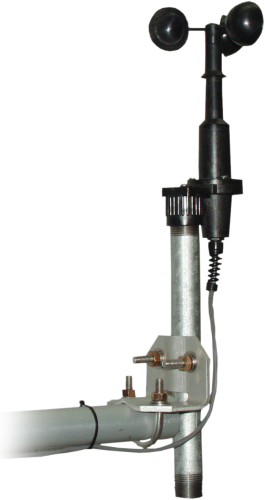Picking the Right Anemometer: A Comprehensive Purchasing Guide
Picking the Right Anemometer: A Comprehensive Purchasing Guide
Blog Article
Anemometers Introduced: Understanding Their Relevance in Environmental Monitoring and Security Procedures
The duty of anemometers in ecological surveillance and safety procedures is usually underestimated, yet their relevance is obvious. From weather forecasting to air travel safety and security, anemometers play an essential role in offering accurate information that notifies decision-making procedures and boosts general security.
History of Anemometers
The development of anemometers can be traced back to the old worlds where primary wind gauging gadgets were initial used. These early wind dimension tools laid the foundation for the growth of much more advanced anemometers with time. One of the earliest recognized anemometers was the hemispherical cup anemometer developed by Leon Battista Alberti in the 15th century. This design contained four hemispherical mugs that collected wind energy, giving a measurement of its intensity based on the speed of rotation.
Over the years, advancements in modern technology led to the development of more modern-day anemometers, consisting of ultrasonic anemometers and laser Doppler anemometers, offering boosted accuracy and efficiency in measuring wind rate and direction. The history of anemometers showcases an exceptional journey of innovation and progress in the field of weather forecasting.
Kinds Of Anemometers
Throughout the field of weather forecasting, various kinds of anemometers have been created to precisely determine wind speed and instructions. Sonic anemometers use ultrasonic signals to measure wind rate and instructions properly. Hot-wire anemometers run based on the concept that the cooling effect of wind on a warmed cable is proportional to the wind speed.
Applications in Meteorology
Having talked about the different kinds of anemometers made use of in meteorology for determining wind rate and instructions, it is vital to explore their functional applications in the field. Anemometers play a crucial duty in weather forecasting by providing real-time and accurate data on wind problems (anemometer). Meteorologists make use of anemometers to keep track of wind rate and instructions to forecast weather patterns, issue warnings for extreme climate events like storms, storms, and twisters, and evaluate weather for aeronautics safety
In weather forecasting, anemometers help in understanding regional and regional wind patterns, which are essential for predicting weather modifications and establishing climatic patterns. These gadgets are likewise made use of in research study to examine microclimates, urban heat islands, and air pollution diffusion. Furthermore, anemometers are used in agriculture to optimize crop monitoring practices, such as watering and chemical application, based upon wind problems.
Importance in Aviation Safety
An important element over here of guaranteeing aeronautics safety and security exists in the meticulous surveillance of wind conditions utilizing anemometers. Anemometers play a crucial duty in air travel by giving real-time data on wind rate and direction, helping pilots in making notified decisions throughout trip, landing, and liftoff. Uncertain and solid winds can substantially affect airplane operations, making it important for aeronautics authorities to count on precise wind dimensions to ensure the safety of guests and team.

In the vibrant setting of aeronautics, where even minor modifications in wind rate and direction can have profound results, anemometers stand as important devices for advertising risk-free and protected air travel.
Function in Environmental Research
Exactly how do anemometers add to innovations in environmental research? Anemometers play a vital role in environmental study by giving essential information on wind rate and instructions. This information is crucial for comprehending various climatic procedures, such as air contamination dispersion, climate patterns, and environment change. By precisely measuring wind attributes, anemometers aid scientists examine the movement of toxins in the air, examine the impact of industrial discharges, and predict the spread of contaminants in the setting.


Final Thought
To conclude, anemometers have actually played a critical role in ecological tracking and safety actions. With a rich background and different types offered, these tools have actually been widely utilized in meteorology, air travel safety and security, and ecological research study. Recognizing the significance of anemometers is necessary for precisely determining wind over at this website rate and direction, which is vital for predicting weather condition patterns, making certain secure aviation operations, and performing environmental research studies - anemometer. Their payments to these areas can not be underestimated.
One of the earliest recognized anemometers was the hemispherical mug anemometer developed by Leon Battista Alberti in the 15th century. Over the years, advancements in technology led to the development of more modern-day anemometers, consisting of ultrasonic anemometers and laser Doppler anemometers, supplying increased accuracy and efficiency in measuring wind rate and direction. Hot-wire anemometers operate based on the principle that the cooling impact of wind on a heated cord is symmetrical to the wind rate. Meteorologists make use of anemometers to check wind speed and instructions to anticipate weather condition patterns, issue warnings for extreme climate occasions like hurricanes, storms, and tornadoes, and analyze atmospheric conditions for air travel safety and security.
Recognizing the importance of anemometers is necessary for accurately measuring wind rate and instructions, which is important for forecasting climate patterns, guaranteeing risk-free aeronautics procedures, and carrying out environmental studies. (anemometer)
Report this page